Vremea frumoasă s-a instalat deja și e timpul să ne gândim la lemnul care stă afară, adică la pergole, garduri, jardiniere, mobilă de grădină. El trebuie protejat de soarele verii ce va să vină, dar și de ploi, vânt, insecte, mucegaiuri, deci, de toate agresiunile la care va fi supus.
Cu toate că s-a născut afară, după ce este tăiat și prelucrat, lemnul trebuie protejat pentru că altfel intemperiile și soarele îi vor schimba culoarea naturală, insectele îl vor ataca, la fel va face și mucegaiul albastru, iar toate aceastea îi vor grabi îmbătrânirea și distrugerea. Nu toate speciile de lemn sunt la fel de afectate de factorii de mediu. Speciile mai taninoase rezistă mai bine la exterior, pentru că au impregnantul lor natural care le apără. Este cazul exoticului teak, dar și al salcâmului nostru care are rezistență foarte bună la exterior.
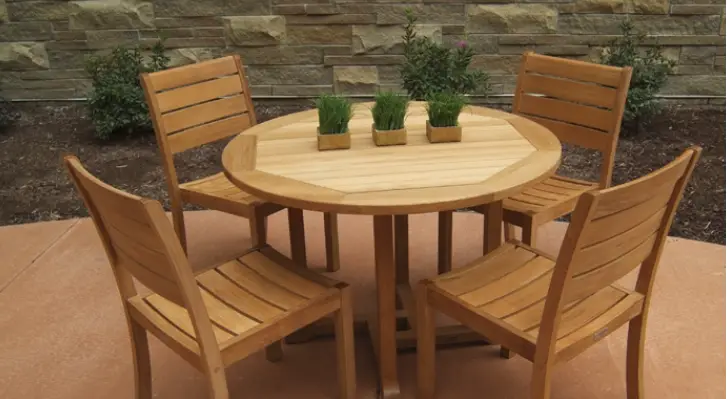
Pentru exterior poate fi folosit lemn care a fost deja tratat cu impregnanți. Sunt tratamente industriale care constau în impregnarea lemnului sub presiune, în autoclave, cu substanțe chimice care-l fac rezistent la acțiunea insectelor și a mucegaiurilor, dar și la putrezire (lemnul băgat în pământ). Acest lemn are uneori culoarea verde sau verde albăstrui din cauza substanțelor chimice cu care a fost tratat. Este folosit la construcții importante, pentru stâlpii de telegraf, structuri de rezistență, dar poate fi folosit și la lucrări obișnuite (pardoseli exterioare). Este mai scump decât un lemn netratat, dar mai rezistent. Poate fi colorat și finisat fără probleme.
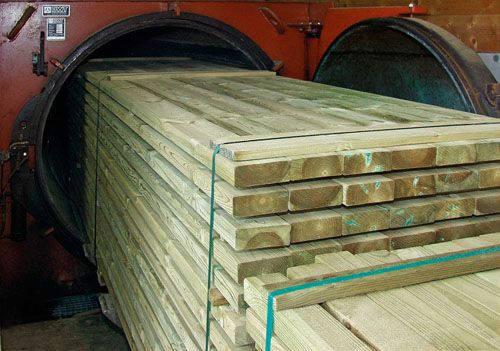
De multe ori însă este preferat lemnul netratat pentru lucrări exterioare, protejarea lui făcându-se după executarea lucrării. Se folosesc impregnanți colorați și lacuri rezistente la exterior, lazuri, impregnanți cerați, sau vopsele rezistente la exterior. Trebuie știut că lemnul folosit la exterior nu are aceeași umiditate ca cel folosit la interior (8-12%). Pentru exterior se folosește lemn cu umiditate mai mare, ajungând la 16-18% (depinde mult de umiditatea din zona respectivă).
Coloarea lemnului care stă afară trebuie făcută cu coloranți rezistenți la exterior. Coloranții obișnuiți nu rezistă acțiunii radiației UV și sunt distruși în timp. Dacă este direct în bătaia soarelui se decolorează în mai puțin de 1 an. Folosirea impregnanților colorați garantează rezistența culorii în timp.
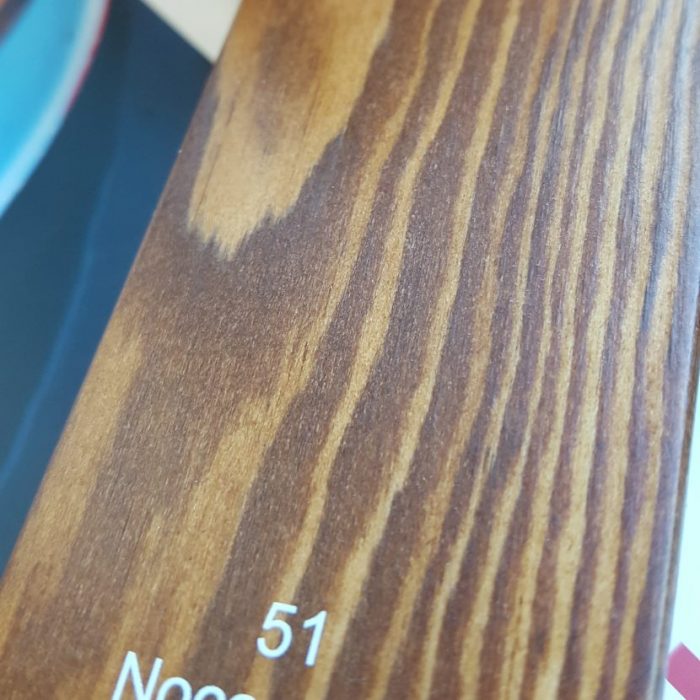
Protejarea împotriva umiditații și a intemperiilor se face cu materiale care fac peliculă. Este bine să nu faceți economie și să le folosiți pe cele făcute special pentru a fi folosite la exterior. Aceste lacuri trebuie să fie elastice, să nu crape atunci când lemnul variază dimensional în funcție de umiditatea exterioară.
Lacurile mai mate sunt mai rezistente în timp decât cele lucioase. Nu sunt recomandate însă nici lacurile foarte mate (sub 10-15 gloss) pentru că au o cantitate mare de agent de mătuire care le fac mai poroase, existând riscul pătrunderii apei pe sub ele. De asemenea, sunt mult mai rezistente lacurile puțin colorate (miere) decât cele total incolore.
Există situații când lemnul, cu toate că este afară, nu este direct expus soarelui și intemperiilor, cum este cazul sageacurilor sau când protecția lui nu trebuie să fie chiar ca a unui mobilier (garduri, pergole de exemplu). În acest caz se folosesc lazuri, sau impregnanți cerați. Lazurile sunt practic lac și impregnant la un loc. Fiind produse colorate trebuie avut grijă la aplicare pentru a nu avea neuniformități. Dacă se aplică mai multă cantitate într-un loc și mai puțină în altul apar diferențe de culoare.

Să vă spun sincer eu consider impregnanții cerați cele mai bune și mai simplu de folosit materiale pentru finisări fără peliculă. Sunt formulați cu coloranți rezistenți la exterior și cu ceară. Pentru un lemn care stă continuu sub acțiunea directă a intemperiilor lipsa peliculei este un lucru bun. Variațiile dimensionale mari pot duce la crăparea peliculei și atunci nu mai vorbim de protecție. Ceara împiedică apa să intre în lemn, dar îl și lasă să se miște în voie.
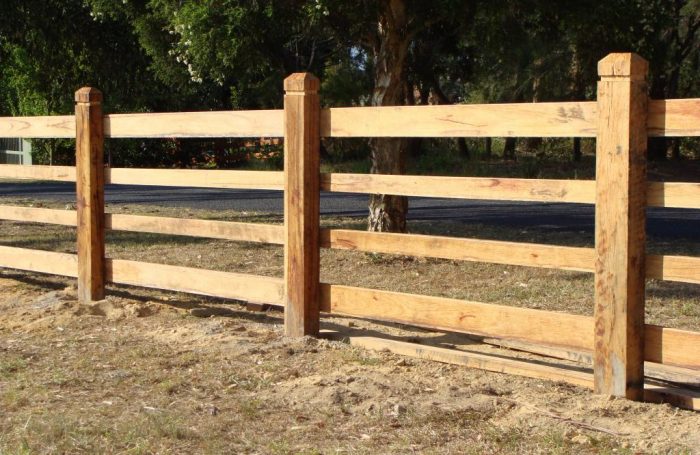
În concluzie, dacă vreți să finisați mobila de grădină, mese folosite la exterior, bănci, dar și uși și ferestre, faceți întâi impregnarea lemnului, iar după uscare aplicați 1-2 straturi de lac pentru exterior. Dacă vreți sa protejați gardul, sageacul pergola, sau vreți o mobilă mai rustică, folosiți impregnanți cerați. Lazura o puteți considera o formă de protecție cu impregnant și lac, unde stratul de lac este mai subțire.
Produsele de finisare pentru exterior sunt simplu de folosit, pot fi aplicate cu pensula sau cu trafaletul și cel mai important, sunt pe bază de apă. Un motiv în plus de luat în considerare dacă vă gândeați să vă protejați mobilierul de grădină sau gardul. Veți fi foarte mulțumiți de rezultat și veți face și o activitate relaxantă. Așa că, spor la treabă!






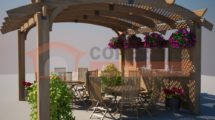






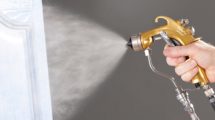



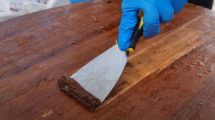

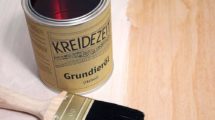






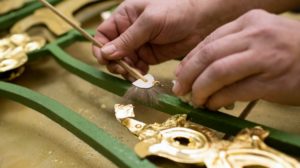
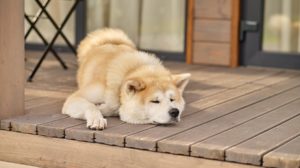




Isn't linseed oil a suitable solution for protecting wooden furniture that sits outside?
Hello,
Linseed oil was used for protection in the past. Now it is no longer an alternative because it has no resistance to UV radiation, and unless solvents are added (not bleached) such as white spirit or other petroleum derivatives, it dries very slowly (sometimes for weeks). It is not recommended for floors (decks) because it has no abrasion resistance.
All the best!
Hello!Please help me with an answer!I built the foundation of the fence and now we have to install the wood that I bought 2 months ago at the market and I left it to dry out of the sun.Can you please tell me what to give it to resist I want it to be colored.What to give it: primer, varnish or waxed impregnants?Thank you!
Hello,
In my opinion the best solution for fences is waxed impregnation. It protects and doesn't film, so if the wood varies dimensionally with the humidity in the atmosphere it doesn't crack or peel. The disadvantage is that the finish has to be refreshed, depending on how much rain has washed it, every 1-2 years. The varnish can last longer, but if cracking occurs, it needs to be cleaned completely because otherwise it continues to flake. With waxed impregnation, it is sufficient to add another coat on top of the old one.
All the best!
Hello, I built a cottage on oak pillars that I knocked into the ground 3 m. I did not protect the wood with anything. What can I use to protect it.
Hello!
Oak is a hard-wearing wood and will not rot soon. The problem is precisely on the surface, where the wood is exposed to air and water that accumulates. You need to make sure that the water drains away, not puddles. Either lay the soil on a gentle slope, or put sand and stone at the bottom.
For sun and weather exposed pillars I recommend oil-based coloured lacquers. The ones with tung oil give a very good resistance to weathering. The pigments in the coloured varnish (not paint, which completely covers the wood) give resistance to UV radiation.
All the best!
Hello,
Three years ago, I used unburnt engine oil to protect a wooden porch and burnt engine oil to protect a wooden fence (a large area). I saw that you recommend using waxed impregnant. Is this a good solution in this case too (previous use of engine oil)? If not, can you recommend another type of product? I mention that I want to get a colour as close as possible to that of natural wood, on the porch; on the fence it is not possible, I would just like it not to turn black. THANK YOU VERY MUCH!
Hello!
I generally recommend waxed impregnations and oil-based coloured coatings because they do not form a film that will flake off over time when water from weathering enters through cracks in the film. They are good protections, but need to be maintained every 2-4 years, depending on their quality.
In 3 years it is assumed that the oil with which you have protected the wood has already been washed off by the rain so you can use waxed impregnants for both the porch and the fence. If you want to get rid of the blackness caused by burnt engine oil, you should sand the wood. Under the tar layer you will find clean wood.
To protect wood, you need a product that provides two types of protection - weather protection and UV protection. Oil and wax are very good for protection against water. To resist UV radiation they need to be coloured, even if they are transparent. The pigments inside outdoor products are the ones that get in the way of UV radiation. Therefore, outdoor products are not totally transparent and colourless. The higher the amount of pigment inside, the better the protection, so paints (which totally cover the wood) are more resistant than lacquers (coloured but transparent). That's why, in order to resist over time, you should find a lacquer for the wood of the porch in a colour close to that of the wood (pine, douglas fir, light chestnut). If you leave its natural colour - protected only with linseed oil - without any other stain, the wood will turn yellow very quickly, then turn grey.
Below are 2 links that may be helpful.
All the best!
https://revistadinlemn.ro/2018/06/25/8-cele-mai-frecvente-intrebari-despre-protejarea-lemnului-la-exterior/
https://revistadinlemn.ro/2018/08/03/12-reguli-simple-pentru-a-avea-constructii-din-lemn-rezistente-la-exterior/
Hello,
Thank you very much for your detailed and professional answer.
Have a nice day!
Respectfully,
Paula Spatarelu Iancu